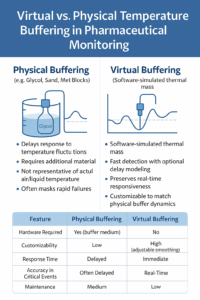In a previous post, reference was made to the Centers for Disease Control and Prevention (CDC) Vaccine Storage and Handling Toolkit. Since the inception of PharmaWatchä this document has been a source of information and direction for how we developed our solution.
From the 2020 copy of this document, the following statement is found in the introduction:
This toolkit provides information, recommendations, and resources to assist you in properly storing and handling your vaccine supply. The Centers for Disease Control and Prevention (CDC) Vaccine Storage and Handling Toolkit brings together best practices from the Advisory Committee on Immunization Practices (ACIP) General Best Practice Guidelines for Immunization, product information from vaccine manufacturers, and results of scientific studies. Implementing these best practices and recommendations will help protect your patients, safeguard your vaccine supply, and avoid the unnecessary costs of re vaccinating patients and replacing expensive vaccines.
This document is not a specification or standard, the introduction (above) does note. This toolkit provides information, recommendations, and resources to assist you in properly storing and handling your vaccine supply. Being such, the information is subject to interpretation and application as to how the end-user or equipment supplier interprets the recommendations. The next series of posts will endeavor to help clarify and refine these recommendations. The intent is to bring a greater understanding to the readers when employing temperature monitoring techniques and applications.
This post will cover the sample rate, or as called out in the CDC guidance, logging interval. When specifying the sample rate, it is necessary to understand the environment being monitored and the equipment being utilized.
The CDC handbook calls out the following: Logging interval (or reading rate) that can be programmed by the user to measure and record temperatures at least every 30 minutes. A sample interval of every 30 minutes is likely an artifact of the technology. That is, the CDC recommends the use of Digital Data Loggers – a low-cost temperature logger that reads and maintains the temperature data until downloaded. Given the technology of the day, this sample interval would comfortably allow the capture and storage of data for two to three weeks. A higher sample rate would reduce the maximum number of days of storage.
The PharmaWatch™ solution captures and transmits the telemetry data to a cloud server. There is no reason to store data on the device.1 With no storage limitation, is the 30-minute sample rate optimal? To determine if the sample rate is optimized, it is necessary to oversample the temperature change of a typical storage unit. The raw data from several refrigerator and freezer examples was analyzed using a Fourier Analysis algorithm.2 An average of a 10-minute sample interval was determined from this analysis. To be conservative, a five-minute sample interval was chosen for the PharmaWatch monitoring solution. Utilizing a 30-minute sample interval can and will result in lost data, i.e. possibly missing excursions which would result in an improper storage condition.
1In certain conditions such as power failure, loss of network infrastructure or system failure the data is retained on the device until such conditions are restored.
2A Fast Fourier transform (FFT) is an efficient algorithm to compute the Discrete Fourier Transform (DFT) and it’s inverse. There are many distinct FFT algorithms involving a wide range of mathematics, from simple complex-number arithmetic to group theory and number theory.


